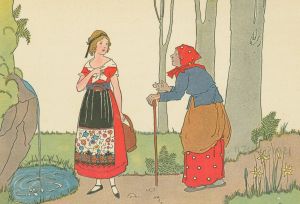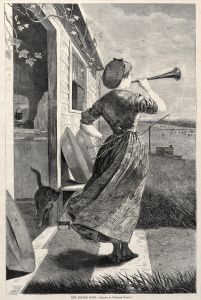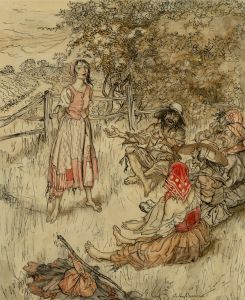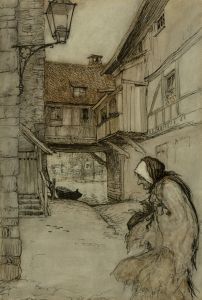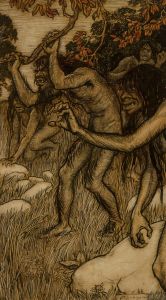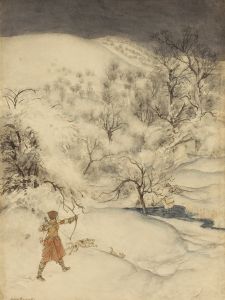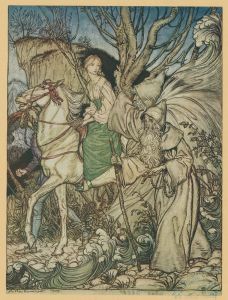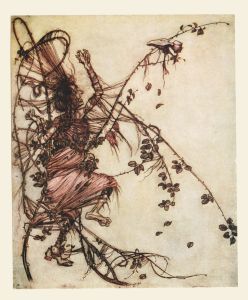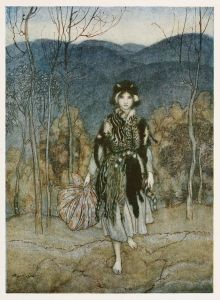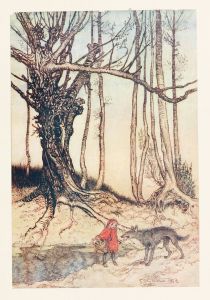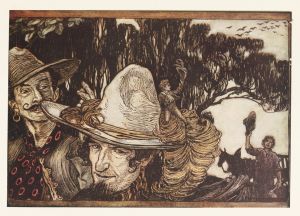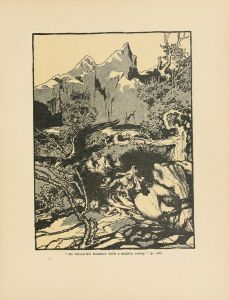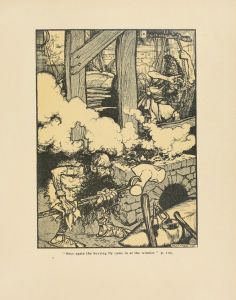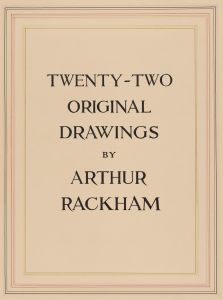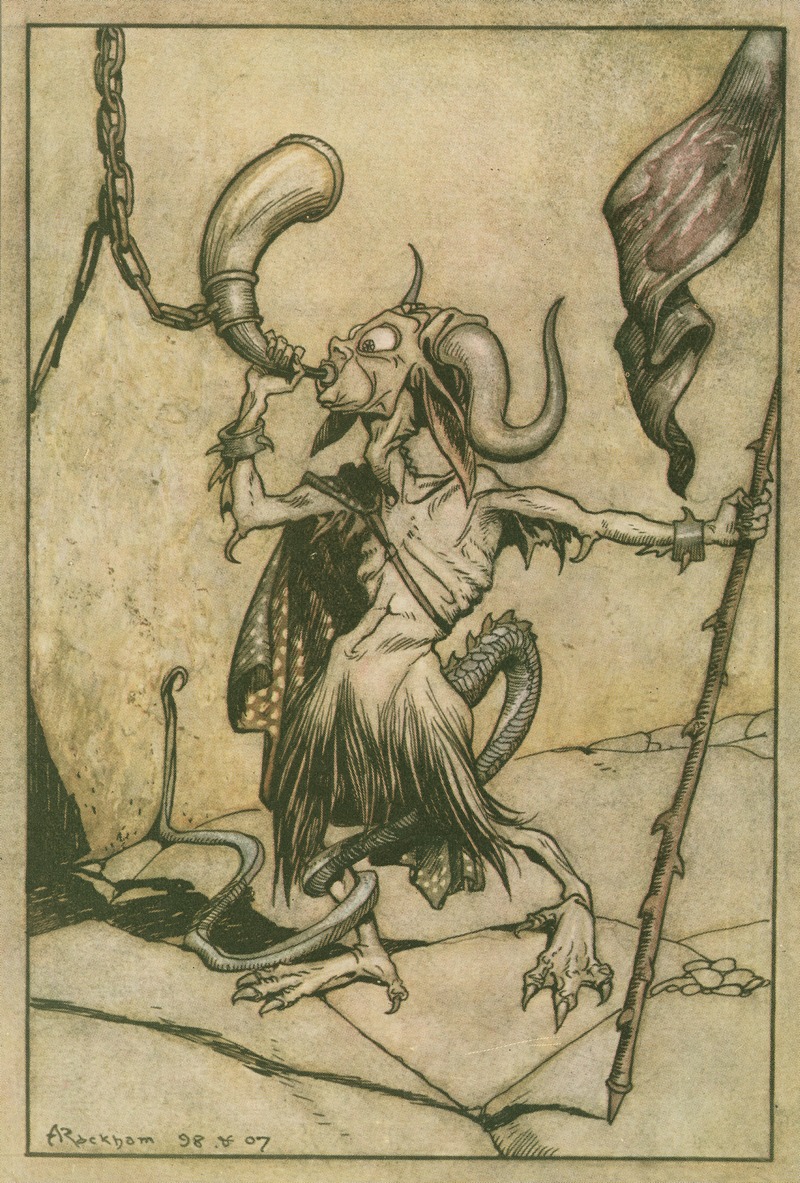
The horn, at the gate of the Barbican tower, was blown with a loud twenty-trumpeter power.
A hand-painted replica of Arthur Rackham’s masterpiece The horn, at the gate of the Barbican tower, was blown with a loud twenty-trumpeter power., meticulously crafted by professional artists to capture the true essence of the original. Each piece is created with museum-quality canvas and rare mineral pigments, carefully painted by experienced artists with delicate brushstrokes and rich, layered colors to perfectly recreate the texture of the original artwork. Unlike machine-printed reproductions, this hand-painted version brings the painting to life, infused with the artist’s emotions and skill in every stroke. Whether for personal collection or home decoration, it instantly elevates the artistic atmosphere of any space.
Arthur Rackham was a prominent British illustrator known for his distinctive style and contributions to the world of book illustration during the late 19th and early 20th centuries. His work is characterized by its intricate detail, imaginative compositions, and a unique blend of whimsy and darkness. Rackham's illustrations often accompanied classic works of literature, fairy tales, and myths, bringing these stories to life for readers of all ages.
"The horn, at the gate of the Barbican tower, was blown with a loud twenty-trumpeter power" is one of Rackham's illustrations, showcasing his ability to capture the essence of a narrative through visual art. This particular illustration is part of his work for the book "The Romance of King Arthur and His Knights of the Round Table," which was published in 1917. The book was written by Alfred W. Pollard and is a retelling of the legendary tales of King Arthur, his knights, and the mythical land of Camelot.
Rackham's illustration depicts a scene rich in medieval atmosphere, a common theme in his work. The image captures the moment when a horn is blown at the gate of the Barbican tower, a setting that evokes the grandeur and mystery of Arthurian legend. Rackham's use of line and color creates a sense of movement and drama, drawing the viewer into the world of knights, castles, and chivalry.
Rackham's technique involved the use of pen and ink, often combined with watercolor washes, to create his signature look. His illustrations are noted for their fine lines and attention to detail, which can be seen in the intricate patterns of the clothing, the textures of the stone tower, and the expressions of the characters. This meticulous approach allowed Rackham to convey the mood and emotion of the scene effectively.
Throughout his career, Arthur Rackham illustrated numerous books, including well-known titles such as "Peter Pan in Kensington Gardens" (1906), "Alice's Adventures in Wonderland" (1907), and "The Wind in the Willows" (1908). His work has left a lasting impact on the field of illustration, influencing generations of artists and continuing to captivate audiences with its timeless charm.
Rackham's contributions to the arts were recognized during his lifetime, and he remains a celebrated figure in the history of illustration. His ability to blend fantasy with reality, along with his dedication to his craft, has ensured that his work endures as a beloved part of literary and artistic heritage. The illustration "The horn, at the gate of the Barbican tower, was blown with a loud twenty-trumpeter power" exemplifies Rackham's talent for bringing stories to life, making him a key figure in the world of visual storytelling.





